Visiting The Oriental Gardens (Page Two)
The Japanese and Chinese Gardens are always a pleasure to walk through... Very relaxing. So what is the difference! Although many oriental gardens look similar, there is a marked difference in the Chinese style and Japanese style of gardens. Here are a few typical characteristics that differentiate a Chinese garden from a Japanese one.
Although both the styles use water and stone around plants for the principal aim of meditation, they follow different philosophies.
The Japanese Garden
Gardens with a Japanese style follow at typical trend of creating natural beauty in limited space. In fact it is a form of art to create Japanese gardens and this art is influenced by the art of calligraphy and painting. History says that the Japanese gardens were influenced by the Chinese style of gardening very early in the thirteenth century.
A typical Japanese garden often complements a central home with which it blends in perfection. These gardens usually have water either in reality or symbolically with a bridge over the water. The bridge may be replaced by stepping stones on several occasions to give a mark of authenticity. There is invariably a setting of rocks or stones and a lantern somewhere in an aesthetic place. The lantern is normally made of atone and is teamed up wit a pavilion or tea house. The hedge or fence is given a traditional touch that speaks of Japanese art and culture.

The gong was tied down... Good idea with todays children!
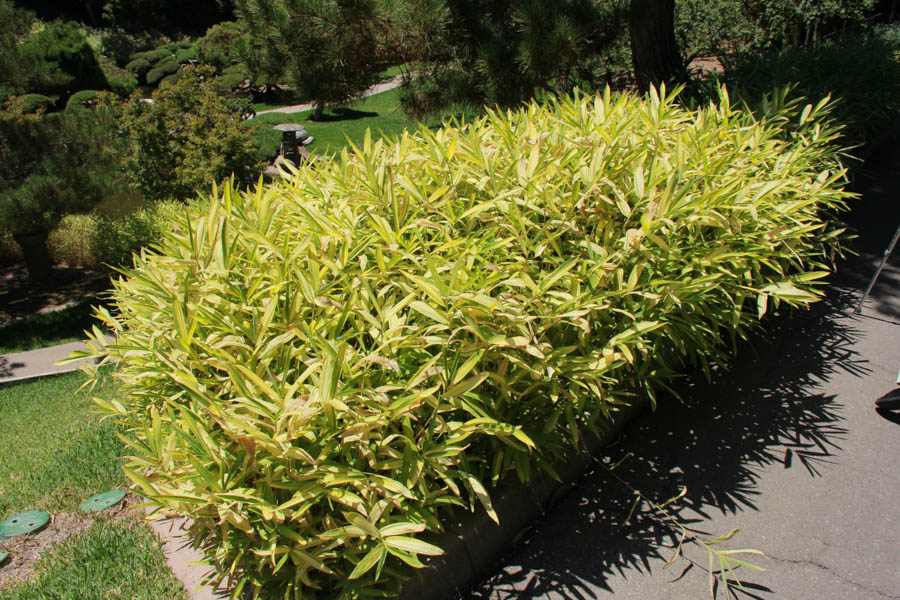
Showing some heat stress
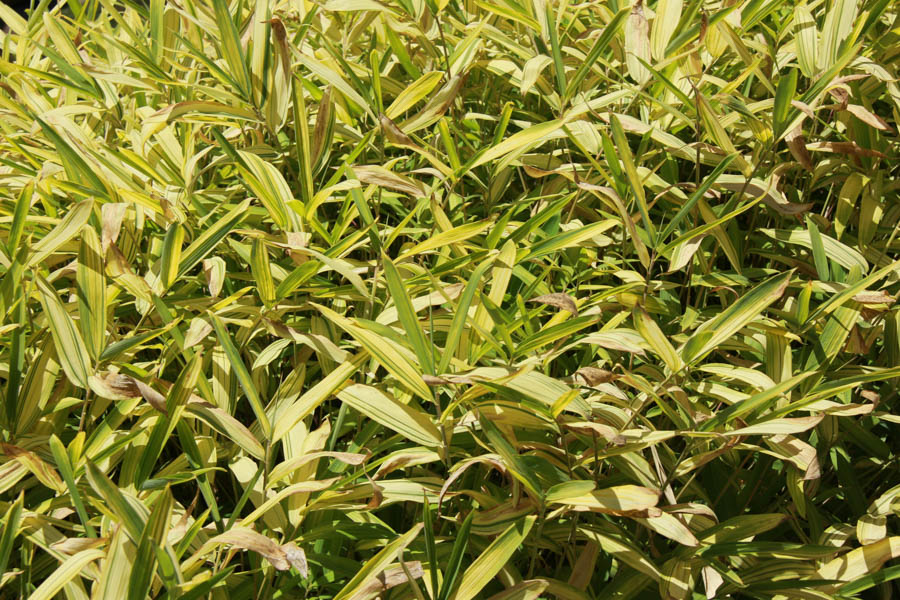
...but still pretty

Must be some algae in the water as it is not as clear as normal

Underneath the arbors provides a cool rest spot for walkers

Love the bridge... Remember when it was red and you could walk on it?
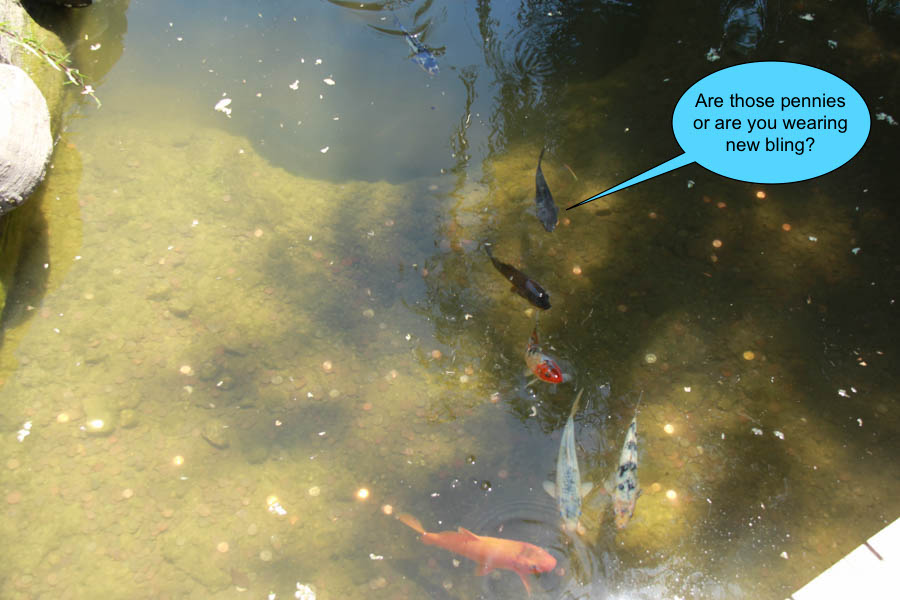
The pennies were gleaming in the water

Meet Freddie the Friendly Frog
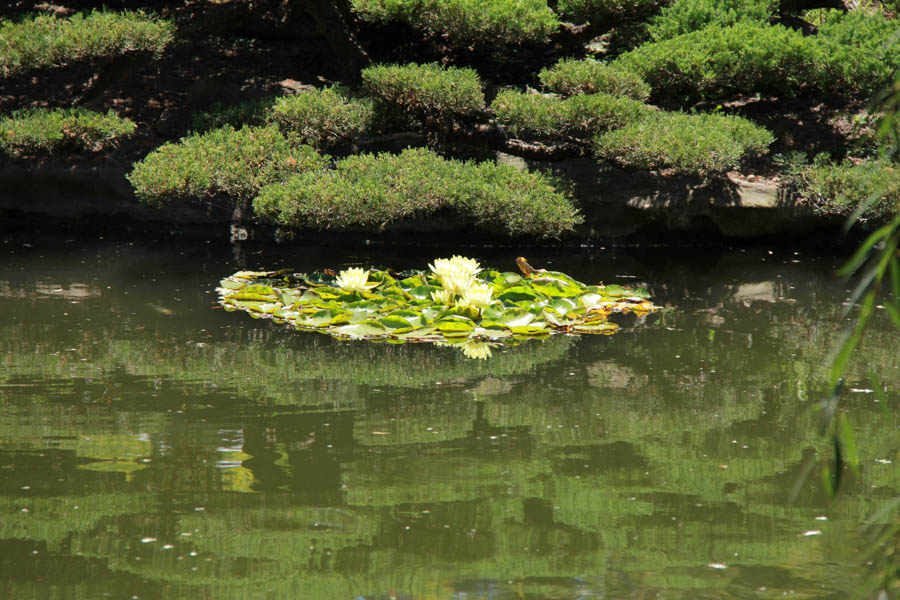
The water lillies were in full bloom
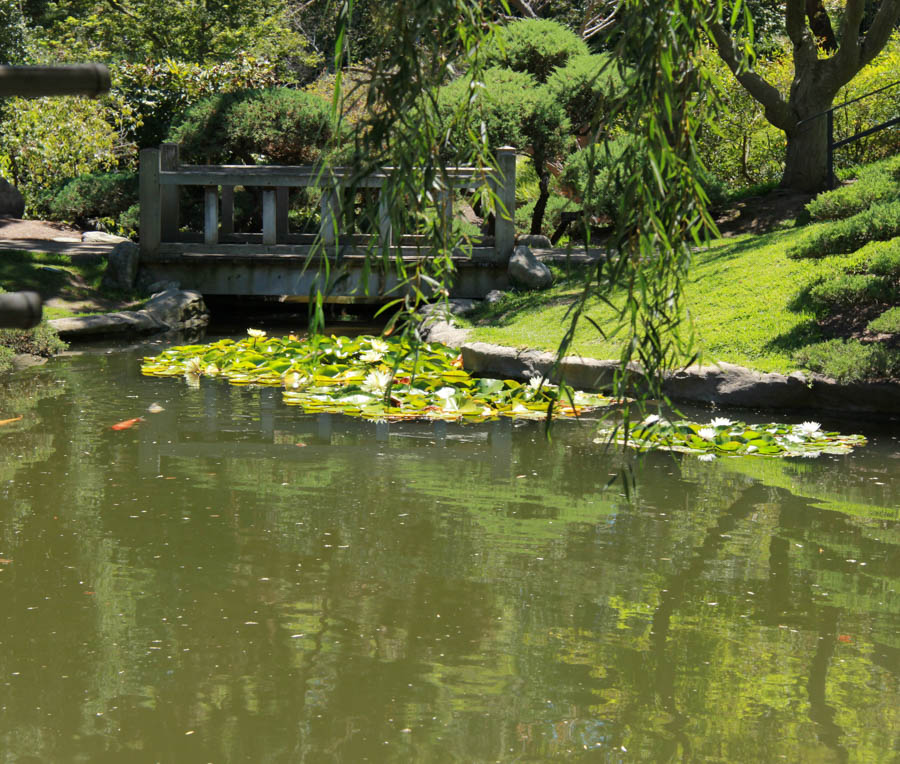
They added drama to an otherwise peaceful lake
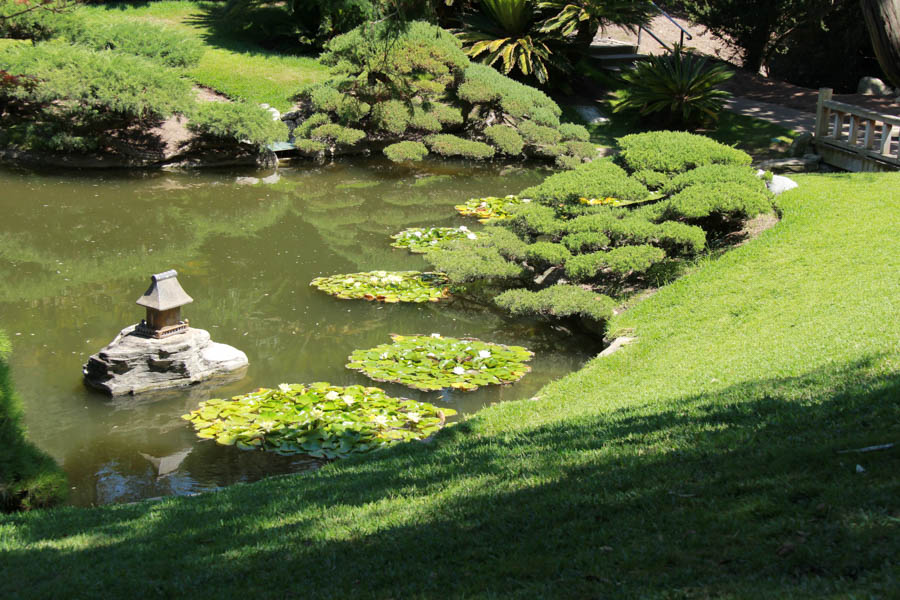
The lillies grow in bunches along the backs
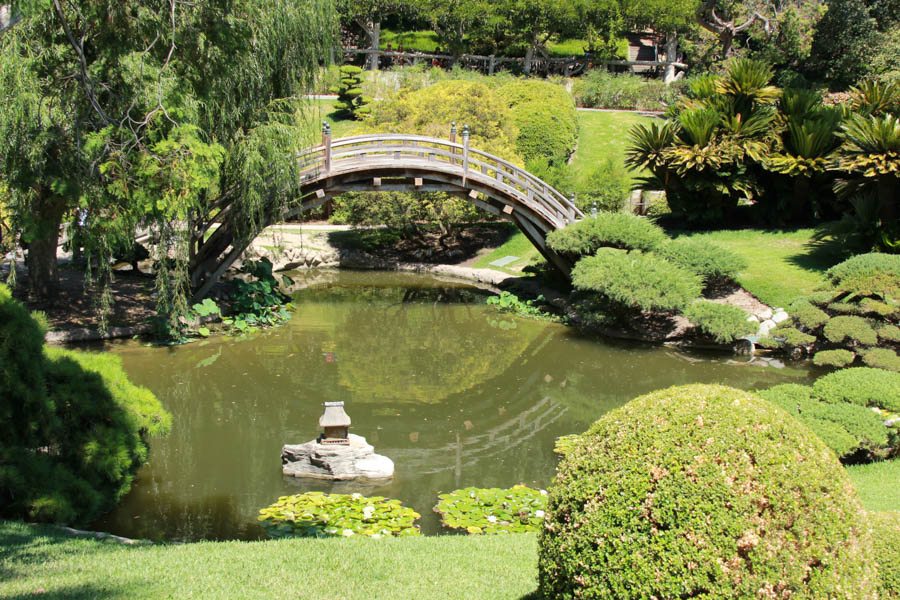
Checkout the reflection!

The stream goes up the "valley" toward the Chinese Gardens

We attacked the stairs to visit the Zen Garden and Bonsai
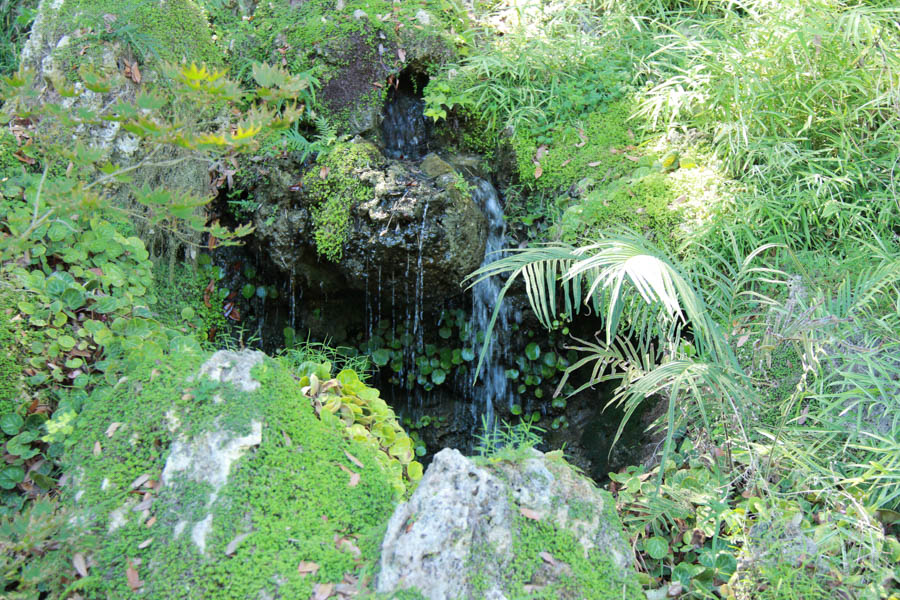
The waterfalls were so peaceful

The tower looks over the walking path
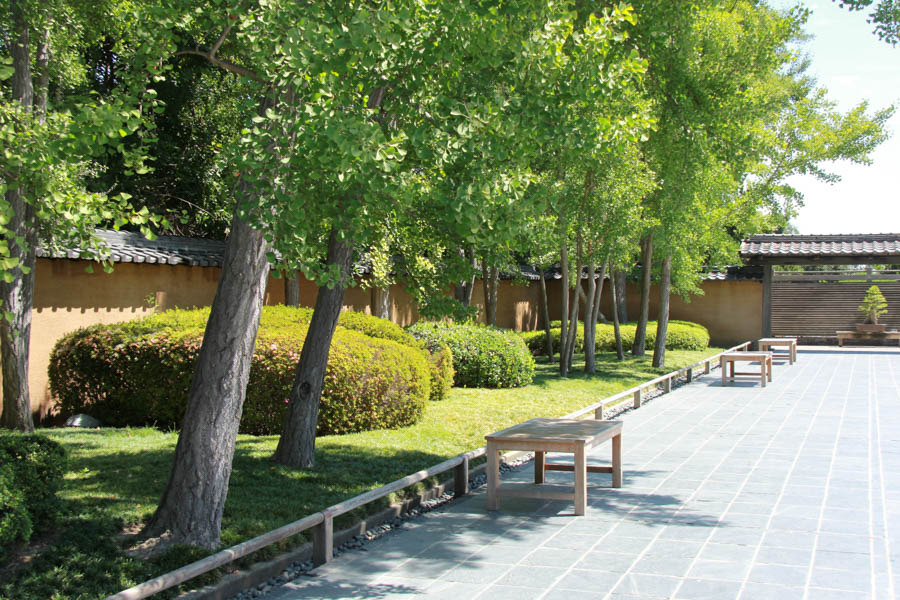
The Ginko trees look green today but give them a
few months and they will be bright yellow
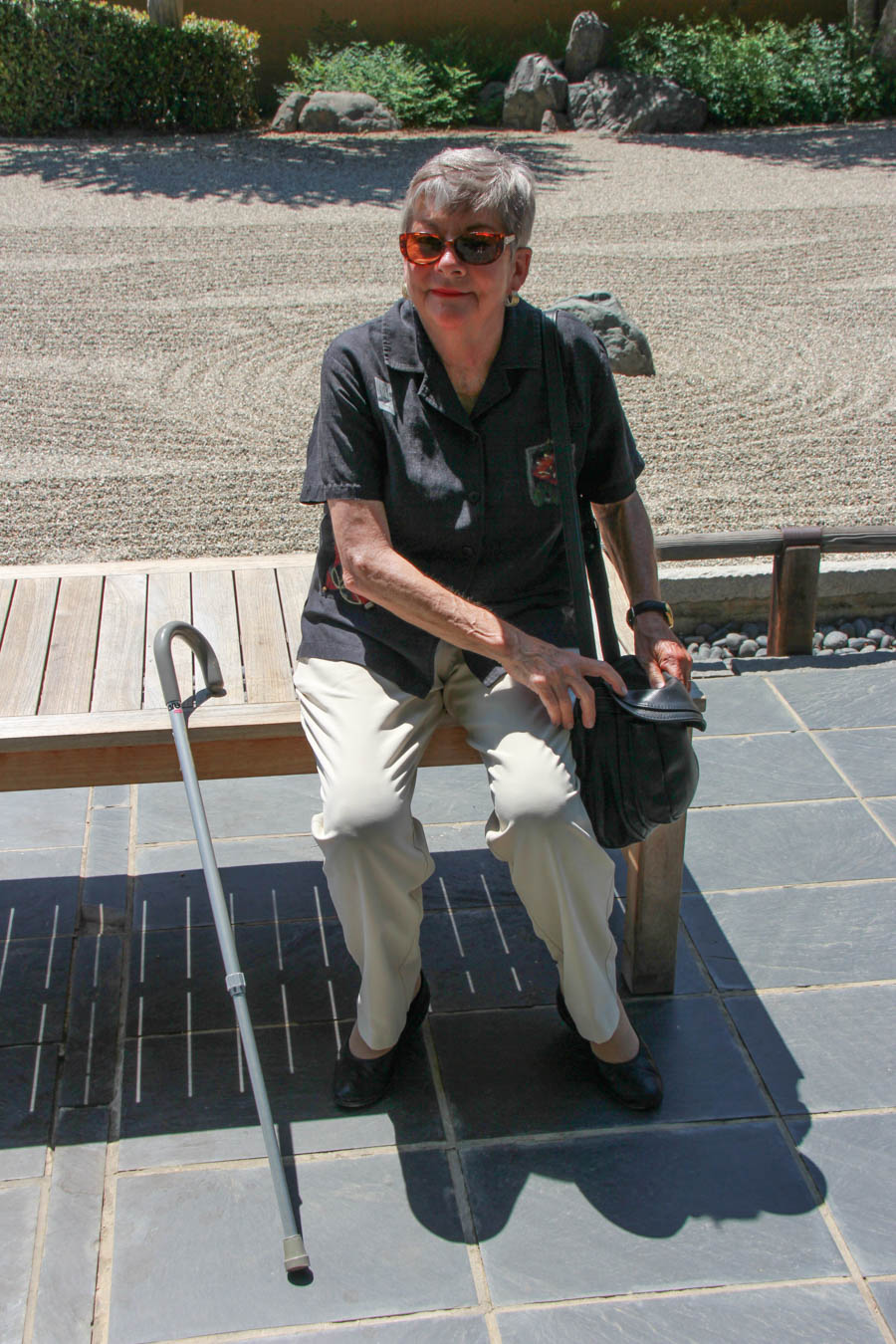
Taking a short rest

Just beautiful
Did You Know? - The leaves of the ginkgo trees do not turn red. Instead they turn into one of the most brilliant yellow colors that nature has to offer. Ginkgo trees are more easily found in temples, shrines, urban parks and along city streets than in nature. The Metropolis of Tokyo has chosen the ginkgo as its symbol tree.

The Bonsai are pretty amazing

The Hornbeam is a type of Birch


The Tea Room is adjacent to the flag pole
We have come a long way Baby!

Reaching for the sky
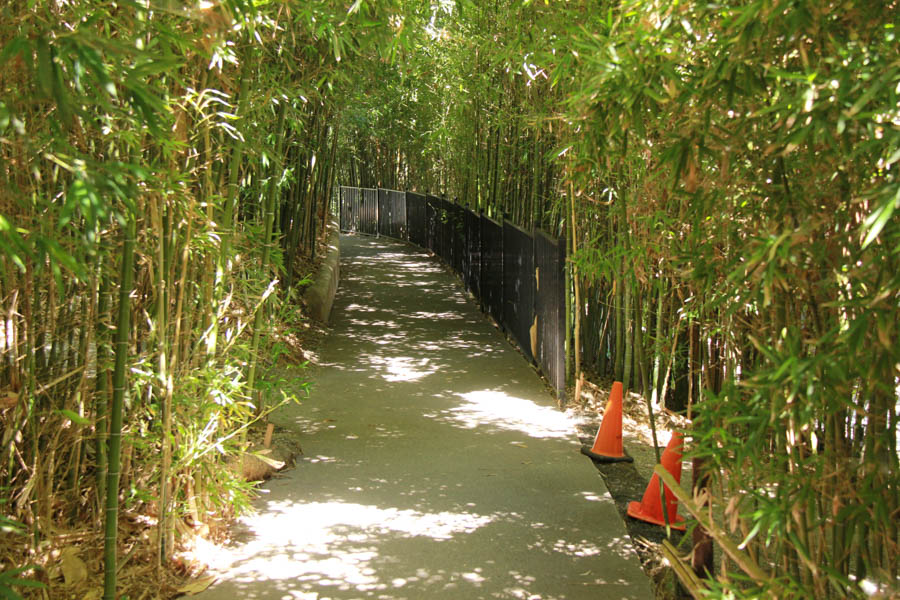
We had several little "halls of bamboo" to walk through

The things you see in the jungle when you do not have a gun!
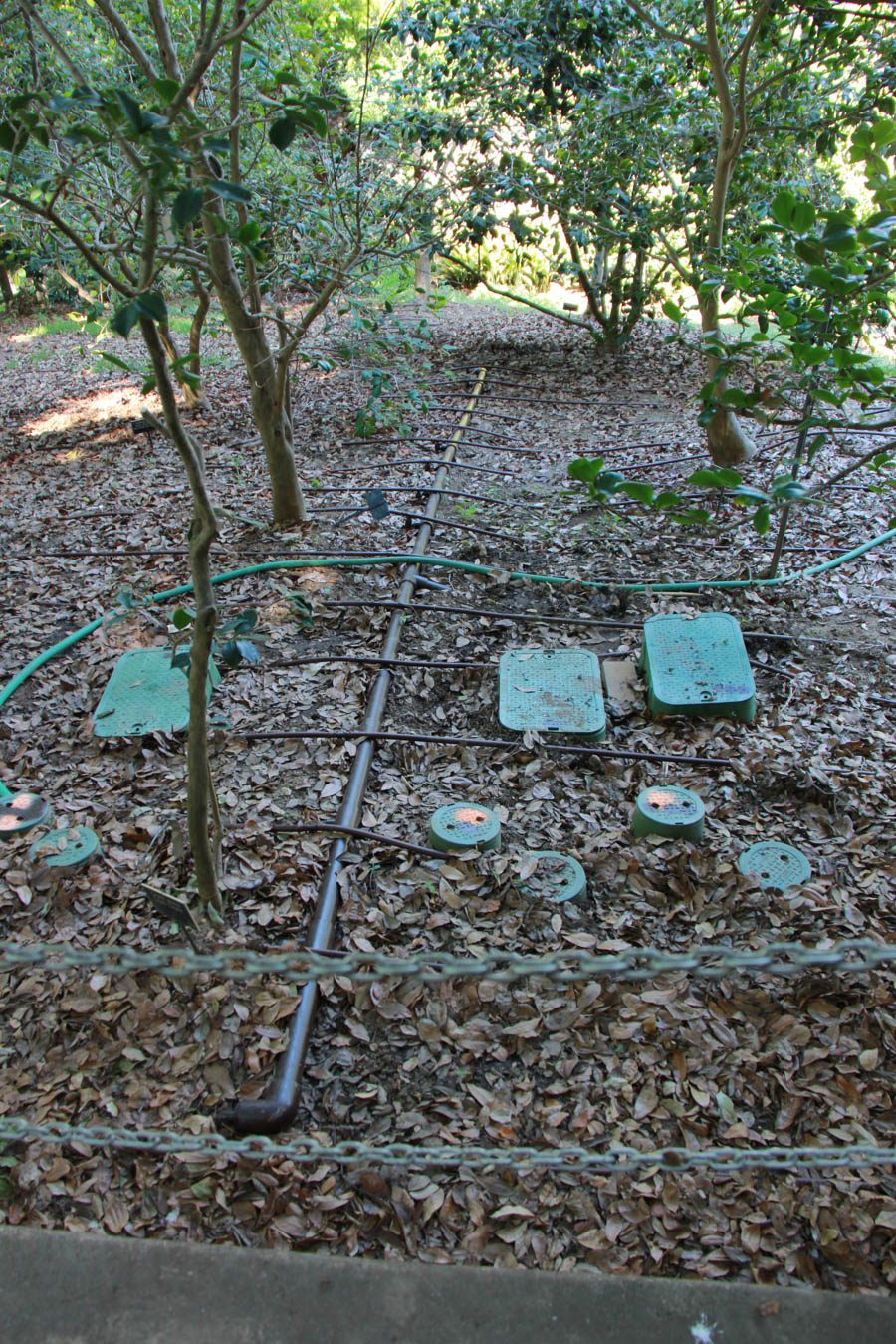
Watering this big a garden is a science "sprinkled" with a little art!
Drips are
used all over to save water

Must be 50 miles of pipe laid out on the ground

The Chinese Garden
The Chinese garden is also known as the Chinese scholar's garden is a place where one can rest in blissful solitude in the midst of serene beauty of Nature. They are principally designed to provide a spiritual space for you to connect with nature, do some self- analysis and thus follow an idealistic path in life. The Chinese gardens are exclusive pieces of breathtaking architecture with plants, stone and water. The owner is identified by his or her aesthetic and cultural taste of his garden in front of his or her home.
The classical gardens in the Chinese style are strongly connected with poetry and painting and are designed to give an ethereal feeling as you enter into the gardens. Philosophically the Chinese gardens depict enlightenment that can be sought by contemplation with nature. It is also a tribute to the spirit of Nature embodied by the work and art of man.
The home gardens have more of a scholarly look with scientific inclination and useful cultivation. The common aspects of all Chinese gardens are naturalistic plantings. The garden is always well balanced with essential elements such as trees, mountains, water and walls placed in harmony with each other.
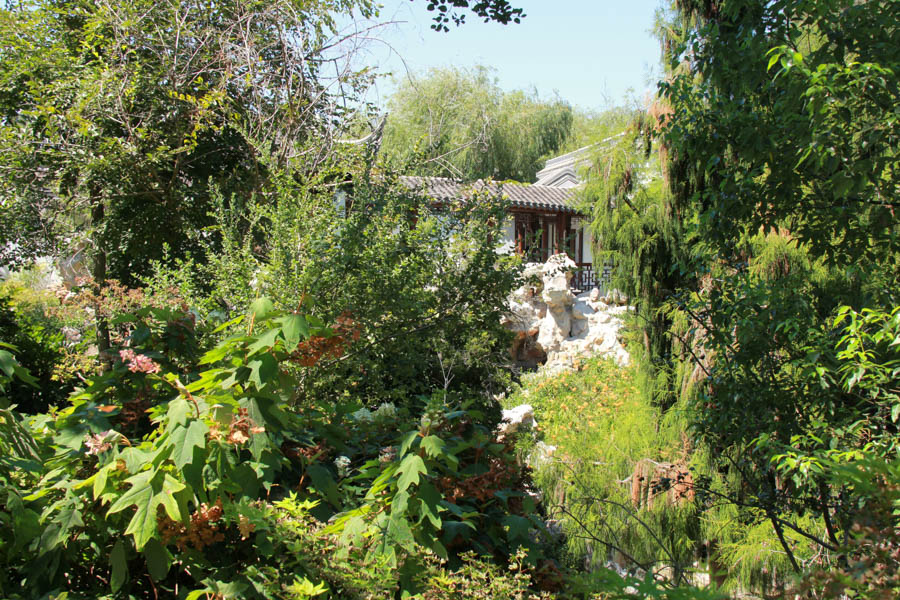
We spotted the Chinese structures through the trees

So very peaceful

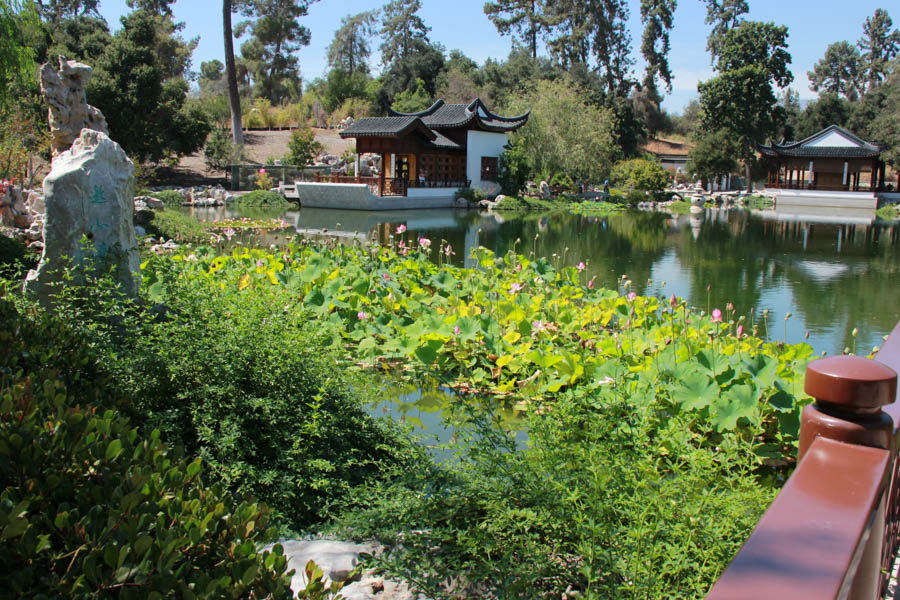
The building allow one to sit and gaze at the lake...
and get out of the heat of the sun

Looking to the sky... They will go dormant in the winter
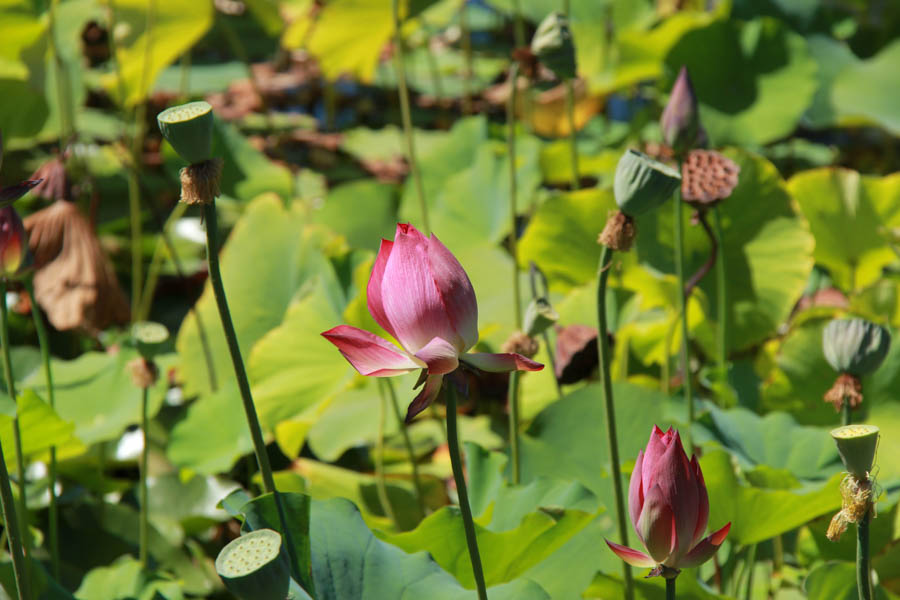
An amazing plant

The seed pods are an amazing structure...

Heads up

The fish find refuge between the stalks

Sitting in the house is a great way to enjoy the afternoon
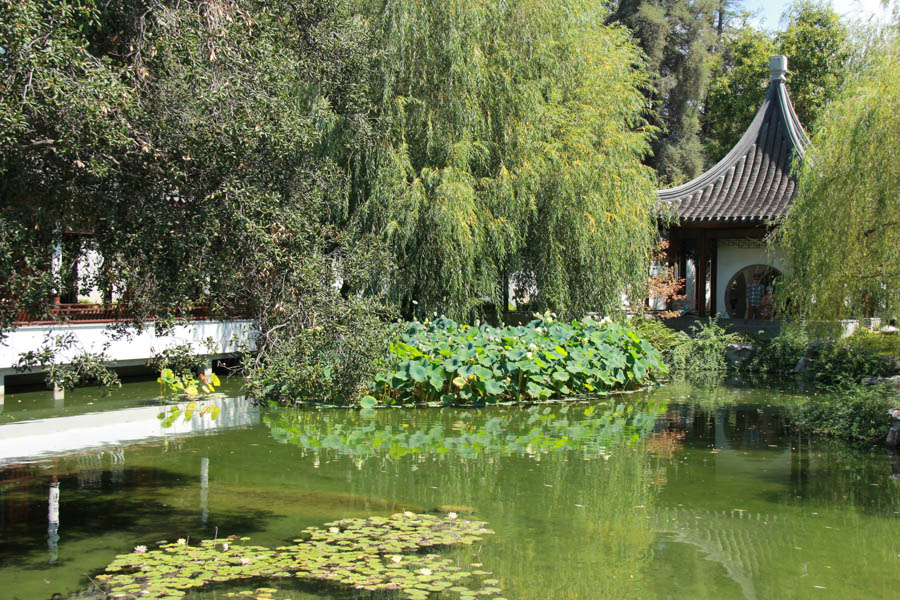
Checkout the reflections
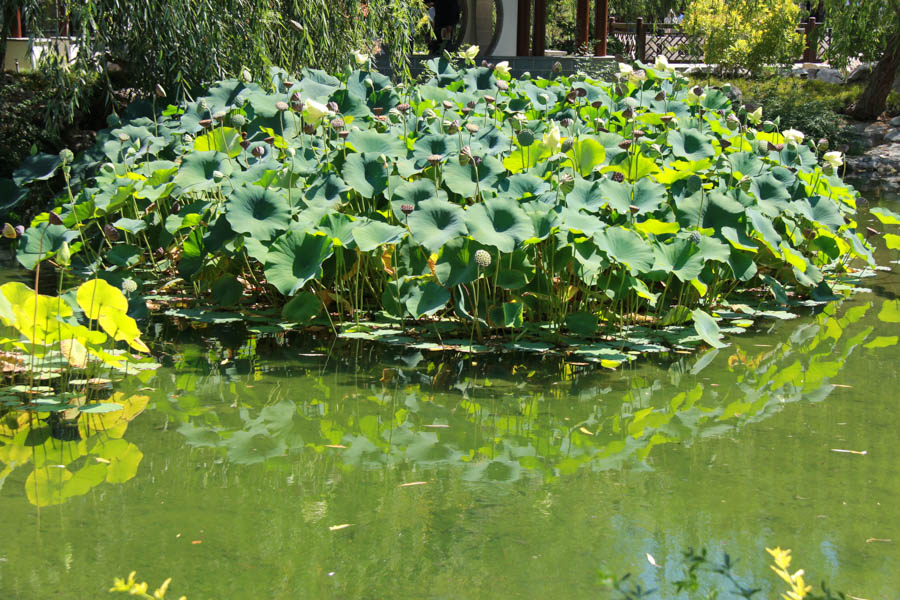
The colors are intense
-
Did You Know?
Lotus can reach only 49 inches in height but it spreads 10 feet horizontally (width). - Flower can reach 8 inches in diameter. Lotus is either pink or white in color. Petals are shaped like a dagger. They are arranged in several layers. Lotus flower protrudes several inches above the water. This flower is known by its beautiful odor.
- Flower opens in the morning and closes at night. Lotus was a symbol of sun, rebirth and creation in the ancient Egypt because of this unusual behavior which marks the beginning and the end of the day.
- Lotus uses rhizomes to attach itself to the ground. Rhizome is buried in the mud or in the sandy floor.
- Leaves of lotus are shaped like paddles. They can reach 20 inches in length.
- Some of the leaves are submerged, while others float on the surface of water. Leaves are equipped with air pockets (inside the tissues) which maintain buoyancy.
- Lotus produces seed in the circular pod located in the center of the flower.
- Seed can remain viable (able to germinate) long period of time. One type of lotus seed managed to develop into plant after 1300 years of dormancy.
- Dried pod of lotus flower is very decorative and often used in floral arrangements. Petals are also used in ornamental purposes.
- Flower, young leaves, seeds and root are edible and often used in Asian cuisine. Older and bigger leaves are used for wrapping of food. Lotus is rich in fibers and vitamins of the B group. It is also rich source of iron and other important minerals.
-
Dried stamens of the lotus are used for the preparation of aromatic tea.
Unlike other flowering plants, lotus is able to maintain stable temperature of the flower. Scientists believe that warmth of the flowers attracts cold blooded insects. - Lotus and water lily look similar but they belong to different genera.
- They differ in the color of the flower and type of the seed pod.
- Lotus is worshiped and considered as sacred flower in Buddhis
- Depending on the number of petals, it symbolizes either cosmic harmony (eight petals) or spiritual illumination (thousand petals). Buddhists turn lotus into powder and use it in different ceremonies.
- Lotus can survive thousands of year and even to revive after long period of dormancy.


"I am pretty... I am pretty"

Do you see the frogs?

These lillies are just getting underway

The Moon Bridge reflections are perfect today
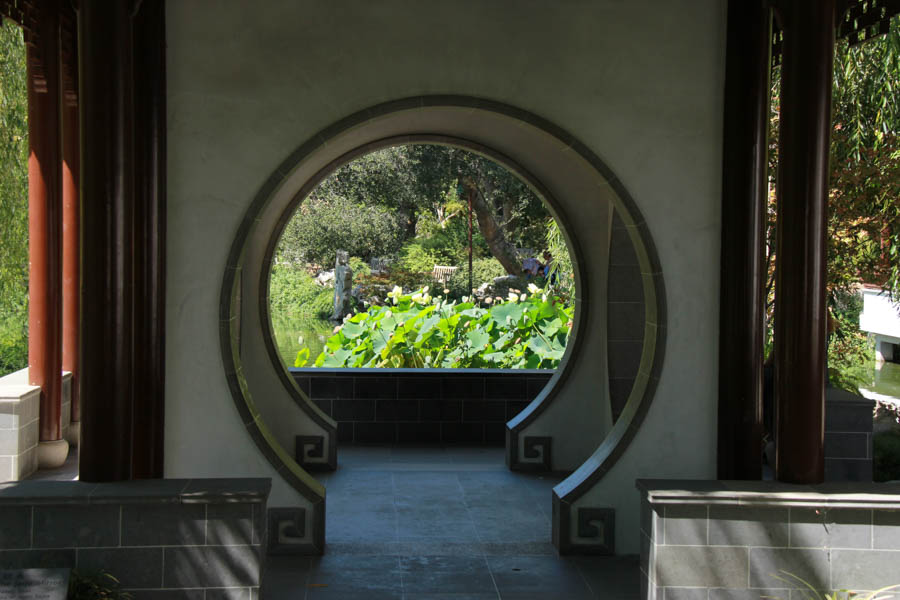
The buildings are quite unique
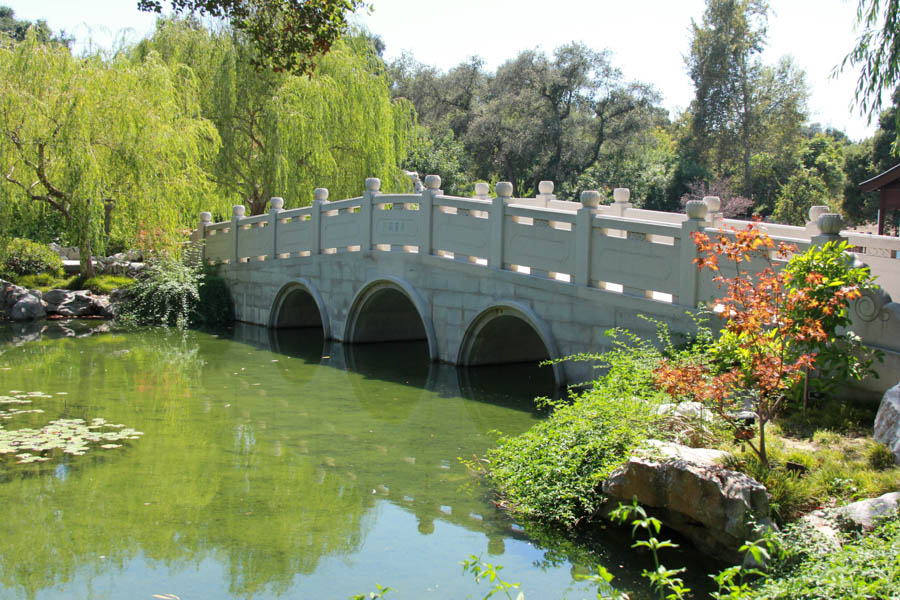
We cross the bridge and head for home

Persimmon Trees are ready to bear fruit
Did You Know? - Persimmons originated in China, where over 2,000 different cultivars were developed. Eventually the tree spread into Korea and Japan. By the middle of the 1800s, the persimmon tree made the journey across the Pacific Ocean to California. The seeds arrived in 1856 with Commodore Perry from Japan, and whole trees were imported to California in 1870.

A beautiful fruit
(We wondered if this is where Sprite cmes from?)
Did You Know? - There are two main species of edible Persimmon, one is native to Japan (Diospyros Khaki) and the other is native to the Eastern United States (Diospyros virginiana). There is a third species, known as the Black Sapote (Diospyros digyna) native to Mexico.
The American variety is a small orange-yellow color, plum-sized fruit which must be fully ripe to be edible. Unripe persimmons (actually a large berry) are inedibly sour, fully ripe fruit are honey sweet with a papaya-mango taste and jelly-like texture. They have long been used by Native Americans, who ate them ripe and also dried them for later consumption.
American Persimmon fruit need curing before they are edible. Another method is to place the fruit in covered pits and smoke them with burning animal dung. For the small home grower, place the newly picked fruit in a sealed container for a couple of days with bananas or apples. The ethylene gas produced by the bananas and apples cures the persimmons.
The Japanese persimmon, actually originating in China is the main persimmon of commerce. The apple sized fruit is sweet with low acidity. They are eaten fresh, candied, dried, made into preserves and used in ice creams.

The open air buildings provide shade in the
summer and escape from the rain in winter

Short rest before heading to the car... It is 98 degrees at this location

![]() Sticking ones hand in the lions mouth is good luck
Sticking ones hand in the lions mouth is good luck

Always under construction... That's why we visit every few months...
Always something different

Paul wanted to play in the dirt... Such a boy!
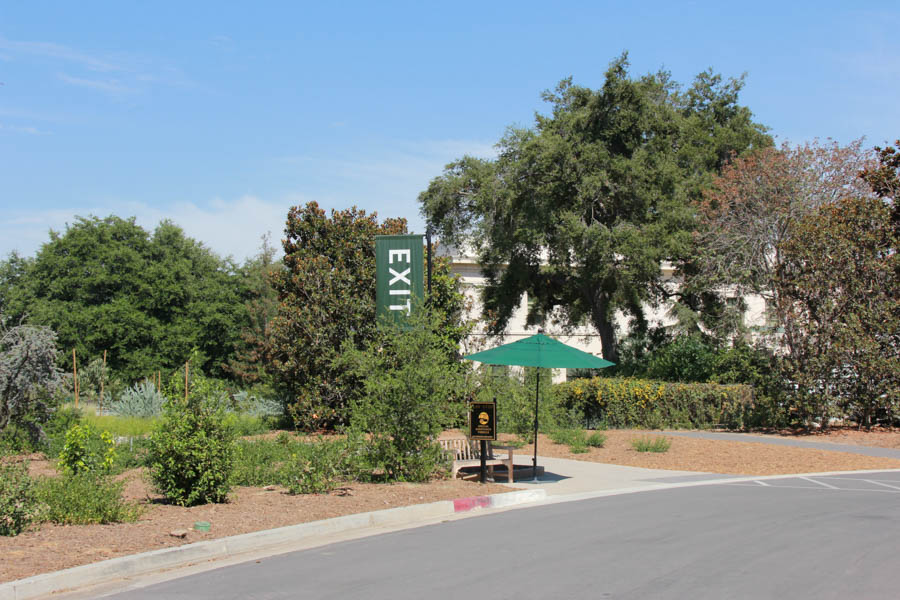
The car (and air conditioning) awaits

Mount Wilson.... Where TV came from for 60+ years...
Did You Know? - It is the location of the Mount Wilson Observatory, and has become an astronomical center of Southern California with 60-inch (1,524 mm) and 100-inch (2,540 mm) telescopes, and 60-foot-tall (18.3 m) and 150-foot-tall (45.7 m) solar towers.
The summit is at 5,710 feet (1,740 m). While not the tallest peak in its vicinity, it is high enough in elevation that snow can sometimes interrupt astronomical activities on the mountain. All of the mountains south of the summit are far shorter leading to unobstructed views across the Los Angeles Basin out to the Pacific Ocean. On an extremely clear day Santa Catalina Island, California, some 70 miles south, is visible, with the horizon stretching another 30 miles beyond that.
Mount Wilson is also heavily utilized for relay broadcasting of radio and television for the Greater Los Angeles Area.

Check the lower left hand pane...
It contains a picture of a very handsome man!


We looked down at the outside temperature guage
while driving home through Duarte on the 210 Freeway - 114 degrees!

"We love you Joanna!!"